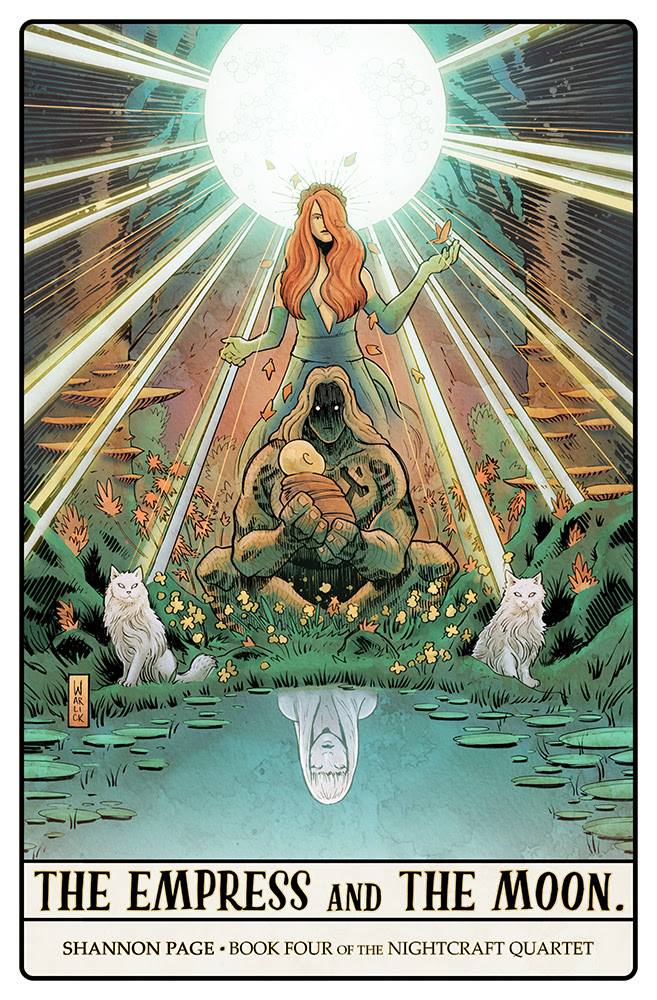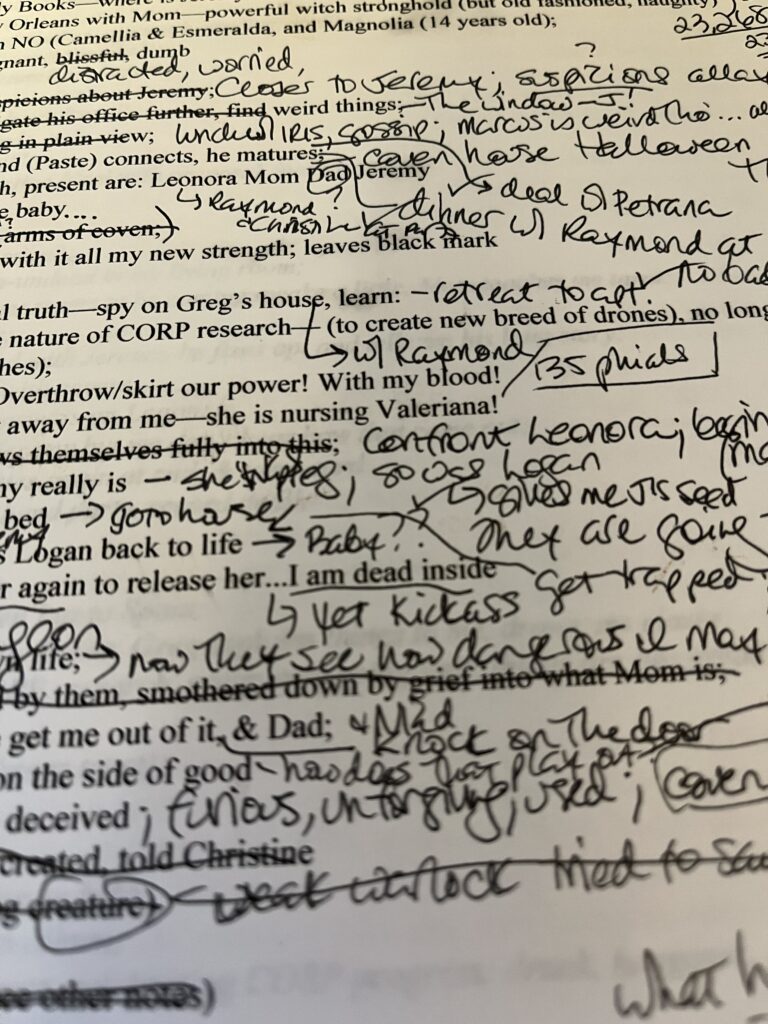
…Suddenly, After a Mere Twenty Years…
In the spring of 2004, I hit a dead end with my first novel. I’d constructed a detailed outline and drafted at least a hundred pages, but it just wasn’t working. It was a literary novel, excessively ambitious in scope yet somehow also thinly plotted. That thin plot managed to be riddled with internal contradictions, one-dimensional characters, deeply felt (one might even say histrionic) emotions, and the purplest of prose. My main character was a young woman with an evil boss and loved ones who don’t understand her; she unwittingly gets pulled into dangers way above her pay grade, and then…something something blah blah blah. Naturally, she was going to prevail in the end, making everyone so sorry they’d mistreated and underestimated her, but how exactly that was supposed to play out, I had no idea.
Around that same time, I read a book about a young woman who discovers she’s a witch. I thoroughly enjoyed reading about her challenges, adventures, and growth, right up until the end of the book, where she gives up her powers in order to become human and mortal! What? I thought. No way! Who would do such a thing? That thought was soon followed by I can do better than that.
I tossed my literary hot mess in the metaphoric trash can and re-envisioned my story as a “witch novel.” I didn’t even know the term urban fantasy then—to me, fantasy meant Tolkien, and the Chronicles of Narnia—though now I’d call the eventual book and its sequels contemporary fantasy.
Today, The Empress and The Moon, the fourth and final book of the Nightcraft Quartet, is being published. If I had known way back in 2004 that it was going to take me twenty more years to reach this monumental milestone, would I have given up? I have published plenty of other books over the past two decades—a spooky hippie horror tale (which turned out to be my actual first novel), an ongoing series of cozy mysteries, an essay collection, a secondary-world fantasy. I’m even taking another stab at a literary novel. I have set Nightcraft down any number of times…but I always picked it back up again. I knew I needed to tell this story.
As Empress’s publication date has approached, I’ve been reflecting on the long, long journey that brought me here. I recently unearthed a huge and very dusty binder packed with false starts, scribbled notes, old outlines, printed emails from several critique groups and first readers, and feedback on queries from both Miss Snark and the Evil Editor (remember them?).
Oh, and rejection letters. So very many rejection letters.
Leafing through that binder has been…enlightening. Cringe-worthy, at times; but for the most part, I’m glad I kept a record of so many of the steps along the way.

The switch from the literary novel I’d been struggling with for a few years to a witch novel was what finally opened up the story. The characters, from the protagonist on down, made so much more sense as creatures of magic. The world was (ironically) a lot more credible, and also much more interesting.
The first finished draft of the witch novel was called Nightcraft Sister, and it was a doorstop: 250,000 words. (For comparison, The Empress and The Moon comes in at 80,000.) It featured a number of elements which did not make it into subsequent versions of the story: witches and warlocks with spiffy names like Lorenzo and Paolo and Dreanor and Esmeralda and Camillia and (for some reason) an accountant named Mike Walker. (I have no memory of Mike Walker.) There was a sexy Spanish witch named Luz, with whom my main character, Callie, an otherwise entirely heterosexual being, inexplicably fell into bed. There was a werewolf, and a necromancer, and a stolen baby, and a demon, and a vague mysterious presence. Callie’s workplace was named CORP—a play on corporation but also corpse, get it?? The characters spent some time in New Orleans, because I’d recently visited there and wanted to write about it. All the sex scenes, and there are a number of them, are written in great and graphic detail.
This triumphant achievement was…well, also a hot mess.
It’s fun to laugh at my new-writer self now, but the fact is, every writer has to start somewhere. And we only get better at it by going to all those ridiculous places first. Trying them out, seeing that they don’t work; figuring out what does.
A great number of things did carry forward from the very earliest drafts. Callie’s best friend Logan, a tarot worker. Her human boyfriend Raymond, her disenchantment with her coven life, her involvement with the sexy warlock Jeremy. Her parents, and her boss Gregorio (and the terrible things he’s up to). Elnor the familiar, and the golem Petrana.
More importantly, the reason I could never set this project down for good, even when I couldn’t figure out how to make it work, is that the basic story was also there from the start. In so many ways, Callie’s journey is my own journey. I’m not a witch, and I haven’t had a child; but I have had to learn how to come into my own power. I’ve needed to understand my strengths and weaknesses, to grapple with seemingly unbearable loss, to take charge of my own life. To let go of situations that are not good for me; to fill my life with people who truly care for me, who know and understand me, who both accept me for who I am and challenge me to become even more.
The Nightcraft Quartet is a series about growth, about setting aside deceptions and embracing what is real and true. The series begins, in The Queen and The Tower, with a deeply divided world—witches versus warlocks; magic hidden from humans; other elements I won’t spoil by calling out here—and moves through the tearing down of these divisions. The strict rules of how things must be turn out to be outdated at best, and never in everyone’s best interest. As Callie defies the authorities and traditions she has grown up with and seeks a better, more honest way of living, she grows into the witch she always had it in her to be—and begins to help others find their own authentic paths.
I was only starting this process in my own life when I drafted Nightcraft Sister; I was barely farther along when I finished the first draft of The Queen and The Tower. I think it took me twenty years to get to the end of the Nightcraft Quartet because it took me that long to truly understand the story I was trying to tell—by learning how to live it.